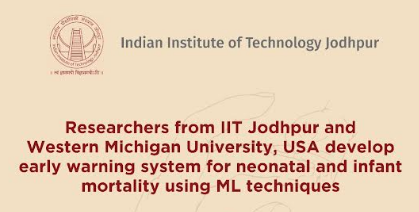Researchers from the Indian Institute of Technology (IIT) Jodhpur and Western Michigan University, USA, have identified significant neonatal and infant mortality predictors using multiple machine learning (ML) techniques. The study uses nationwide household survey data from India. The primary objective of this research was to identify early warning signs of child mortality that community health workers can use.
These early-warning indicators include:
- Observable biological characteristics
- Demographic characteristics
- Socio-economic factors of households, mothers and new-borns
The early warning indicators identified in this study do not require advanced medical knowledge and can be easily used by community healthcare workers. The study uses a range of machine learning algorithms to assess the relative importance of characteristics such as being first-borns, being born in poorer households, and having a low birth weight.
The future goal is to extend and develop more streamlined screening criteria with the availability of more granular data with a combination of clinical and socioeconomic characteristics. This research aims to train community health workers to use predictors as a screening mechanism to identify individuals at risk for mortality and refer them to qualified doctors for more rigorous evaluation. Early identification of risk factors will allow women and newborns to get timely medical care and reduce the child mortality rate in India.
Source: biospectrumindia.com









